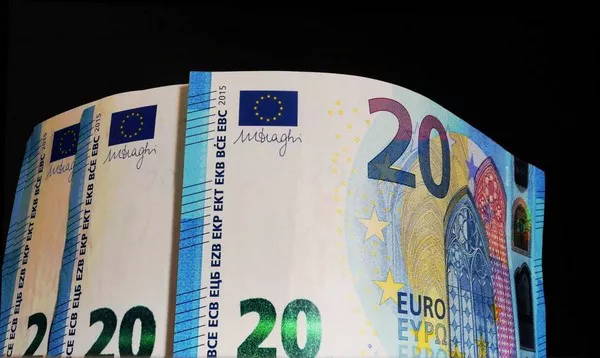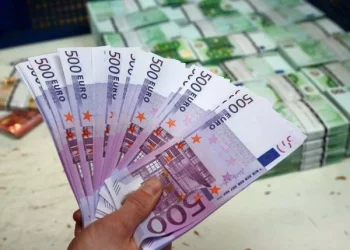The foreign exchange market, also known as Forex, plays a crucial role in global finance. As traders, we analyze various currencies, exchange rates, and economic factors that influence them. One important question in this context is whether Poland, a member of the European Union (EU), accepts the Euro as its official currency. In this article, we will explore Poland’s relationship with the Euro, its current currency situation, and the implications for traders and investors.
Overview of Poland’s Currency
Poland’s official currency is the Polish złoty (PLN). The złoty has been in use since the 14th century, although its modern version was established in 1995. The currency symbol for the złoty is “zł,” and it is divided into 100 groszy. The Bank of Poland (Narodowy Bank Polski, NBP) is responsible for issuing and regulating the currency.
Poland is a member of the EU, having joined the bloc in 2004. However, the country has not yet adopted the Euro as its official currency, even though it is required to do so as part of its EU membership agreement. This situation creates an interesting dynamic in the foreign exchange market, as traders must consider both the złoty and the Euro in their analyses.
Poland and the Eurozone
The Eurozone consists of 20 of the 27 EU member countries that have adopted the Euro as their official currency. These countries share a common monetary policy set by the European Central Bank (ECB). The Euro was introduced in 1999 as a virtual currency for banking transactions, and euro banknotes and coins entered circulation in 2002.
Poland’s decision not to adopt the Euro immediately has generated discussions among economists, policymakers, and traders. The Polish government has repeatedly stated its intention to join the Eurozone in the future, but the timing of this transition remains uncertain.
Reasons for Not Adopting the Euro
There are several reasons why Poland has not adopted the Euro yet. These reasons include economic considerations, political factors, and public opinion. Let’s explore each of these aspects in more detail.
Economic Stability
One of the main reasons for Poland’s reluctance to adopt the Euro is its economic stability. The Polish economy has experienced robust growth over the past two decades. Poland was the only EU country to avoid recession during the 2008 financial crisis. The country has maintained a relatively low unemployment rate and a stable inflation rate.
Before adopting the Euro, countries must meet certain economic criteria set out in the Maastricht Treaty. These criteria include price stability, sound public finances, and exchange rate stability. Poland’s government has expressed concerns that adopting the Euro could jeopardize its economic stability, especially during times of economic uncertainty.
Political Factors
Political considerations also play a significant role in Poland’s decision-making process regarding the Euro. The Polish government is concerned about losing control over its monetary policy. By adopting the Euro, Poland would have to cede authority to the ECB, which may not align with Poland’s national interests.
Furthermore, there is a strong nationalist sentiment in Poland. Many citizens believe that the złoty represents national sovereignty and independence. This sentiment can influence public opinion and political decisions regarding Euro adoption.
Public Opinion
Public opinion is another critical factor in the decision to adopt the Euro. Polls conducted in Poland indicate that many citizens are skeptical about the benefits of joining the Eurozone. Concerns about rising prices, loss of savings, and economic instability contribute to this skepticism.
A significant portion of the population fears that adopting the Euro could lead to increased costs of living. These concerns can hinder the government’s efforts to push for Euro adoption.
Economic Criteria for Euro Adoption
To adopt the Euro, Poland must meet specific economic criteria outlined in the Maastricht Treaty. These criteria are crucial for ensuring that countries are economically prepared to join the Eurozone. The main criteria include:
Price Stability: The inflation rate should not exceed 1.5 percentage points above the average of the three best-performing EU countries.
Sound Public Finances: The government deficit should not exceed 3% of GDP, and public debt should not exceed 60% of GDP.
Exchange Rate Stability: The national currency should remain stable within the Exchange Rate Mechanism (ERM II) for at least two years.
Long-term Interest Rates: Long-term interest rates should not be more than 2 percentage points above the average of the three best-performing EU countries.
Poland has made progress toward meeting these criteria, but challenges remain. The government has implemented policies to reduce the deficit and maintain economic stability. However, the uncertainty of external economic conditions can complicate this process.
The Role of the Polish National Bank
The Polish National Bank (NBP) plays a vital role in the country’s monetary policy. The NBP is responsible for maintaining price stability and ensuring the stability of the financial system. The bank implements monetary policy by adjusting interest rates and controlling money supply.
The NBP’s policies directly influence the value of the złoty in the foreign exchange market. Traders and investors must closely monitor the NBP’s decisions, as they can significantly impact exchange rates and trading strategies.
Poland’s Economic Indicators
To understand Poland’s readiness to adopt the Euro, it is essential to analyze key economic indicators. These indicators provide insights into the country’s economic performance and its ability to meet the Maastricht criteria.
GDP Growth Rate
Poland has experienced steady GDP growth over the past few years. According to data from the World Bank, Poland’s GDP growth rate was 5.1% in 2021, showing resilience in the face of global economic challenges. A strong GDP growth rate is essential for meeting the economic criteria for Euro adoption.
Inflation Rate
The inflation rate is a critical indicator for assessing economic stability. Poland’s inflation rate has fluctuated in recent years, influenced by global supply chain issues and rising energy prices. As of 2023, Poland’s inflation rate was around 6.8%. Keeping inflation within the targeted range is vital for meeting the price stability criterion.
See Also: Why Doesn’t Hungary Use the Euro?
Unemployment Rate
Poland’s unemployment rate has remained relatively low compared to the EU average. As of 2023, the unemployment rate stood at approximately 3.5%. A low unemployment rate is a positive indicator for economic stability and growth.
Public Debt and Deficit
Poland’s public debt has been a topic of discussion in recent years. As of 2023, the public debt-to-GDP ratio was approximately 54%. The government has implemented measures to reduce the deficit, which is crucial for meeting the Euro adoption criteria.
The Impact of Euro Adoption on Poland
The potential adoption of the Euro would have significant implications for Poland’s economy and the foreign exchange market. Let’s examine some of the potential impacts.
Exchange Rate Stability
One of the main advantages of adopting the Euro would be increased exchange rate stability. The Euro is one of the world’s most widely used currencies, and adopting it could reduce currency risk for Polish businesses and traders. This stability would encourage foreign investment and trade.
Interest Rates
Adopting the Euro would likely lead to a convergence of interest rates with those of other Eurozone countries. Lower interest rates could stimulate economic growth, making borrowing more affordable for businesses and consumers. However, it may also limit the NBP’s ability to implement independent monetary policy.
Inflation Control
Joining the Eurozone could help Poland control inflation. The ECB has a mandate to maintain price stability, which could lead to more consistent inflation rates in Poland. However, it is essential to consider that external economic factors could still influence inflation levels.
Economic Integration
Adopting the Euro would further integrate Poland into the European economy. This integration could lead to increased trade with Eurozone countries, providing opportunities for Polish businesses. However, it may also expose the country to economic downturns in other Eurozone nations.
Current Developments and Future Prospects
As of 2024, Poland’s government has indicated a cautious approach to Euro adoption. While officials express interest in joining the Eurozone, they emphasize the need to meet the necessary economic criteria. The government is committed to ensuring that the transition to the Euro does not jeopardize Poland’s economic stability.
The European Union has also encouraged Poland to adopt the Euro, highlighting the benefits of increased economic integration. However, the timing of this transition remains uncertain, as the government must navigate public sentiment and economic challenges.
Conclusion
In conclusion, Poland currently does not accept the Euro as its official currency. The country uses the Polish złoty and has not yet met the necessary criteria for Euro adoption. Economic stability, political factors, and public opinion play significant roles in this decision-making process.
As traders and investors, it is essential to monitor Poland’s economic indicators, the NBP’s monetary policy, and public sentiment regarding Euro adoption. The potential adoption of the Euro could have significant implications for the Polish economy and the foreign exchange market. Understanding these dynamics will help traders make informed decisions in an ever-changing financial landscape.
While Poland’s future in the Eurozone remains uncertain, the prospect of Euro adoption will continue to shape discussions in the financial community. The interplay between the złoty and the Euro will be crucial for traders as they navigate the complexities of the foreign exchange market.
Related Topics:



























